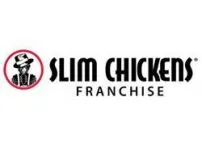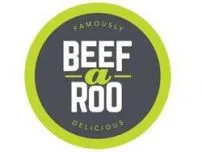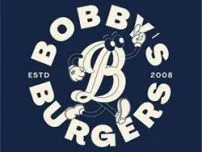Summary
Breakeven in U.S. fast food hinges on five levers: rent, labor, power, sales taxes, and compliance. Rents average $24.79/sf/yr (Miami-Dade ≈ $49.93). Wages are ~$14–15/hr nationally; California mandates $20/hr for large chains. Power runs ~9–11¢ to ~30¢/kWh. Add meals taxes, FDA Food Code rules, and 15–30% delivery commissions — location choices materially change ROI.
Fast food franchise market overview in the U.S.
A fast food franchise (QSR) remains one of the most proven ways to enter foodservice in the U.S. Thanks to standardized menus, streamlined cooklines, and strong brand recall, fast food franchise opportunities combine predictable operations with scale potential. Consumers prioritize speed, value, and convenience — drive-thru, mobile ordering, and delivery — so concepts that maximize throughput and daypart coverage tend to perform more steadily. For first-time and owning fast food franchise operators, the category offers clear playbooks; for multi-unit candidates, it offers territory development and repeatable openings.
Data box — State cost drivers to model from day one:
- Retail rent (U.S. avg, Q2-2025): $24.79/sf/yr; prime corridors can be much higher.
- Commercial power (¢/kWh, Jul-2025): low-cost states ~9–11¢; high-cost ~23–30¢.
- Labor (Fast Food & Counter Workers): national context ~$14–15/hr (OEWS). (Bureau of Labor Statistics)
- CA fast-food floor (≥60-unit chains): $20/hr since Apr 1, 2024.
- Sales tax: use combined state + local; some cities add meals/prepared-food surtaxes.
Investment and Fees
Below are typical fast food franchise cost ranges by format/model. Figures are indicative and vary by site type (inline, end-cap, pad site), build-out scope, equipment, labor market, and supply chain terms.
| Scope / Market | Asking rent ($/sf/yr) | As of | Source |
|---|---|---|---|
| U.S. average | $24.79 | Q2-2025 | CBRE U.S. Retail Figures. |
| Miami-Dade (county avg) | $49.93 | Q2-2025 | Cushman & Wakefield MarketBeat. |
Why it matters: rent is the biggest fixed line in QSR; prime submarkets routinely run 2×+ the U.S. average—always check the latest CBRE/C&W read for your street, not just the metro.
Format / Model (from your original table):
- Inline QSR (counter service): $350,000–$900,000 | Franchise fee $25,000–$50,000 | 4–6% royalty / 1–4% ad fund
- Drive-thru pad site (single/double): $900,000–$2,200,000 | $30,000–$60,000 | 4–6% / 1–4%
- Fast casual inline / end-cap: $500,000–$1,200,000 | $25,000–$50,000 | 4–6% / 1–3%
- Kiosk / small box: $120,000–$350,000 | $15,000–$30,000 | 4–6% / 1–2%
- Ghost kitchen / trailer: $75,000–$250,000 | $10,000–$25,000 | 4–6% / 0–2%
Fast Food
Startup costs and ongoing fees
Startup costs usually cover build-out, equipment (fryers, refrigeration, POS), signage, opening inventory, training, and working capital. Ongoing fees include royalty and ad fund, plus labor, food cost, occupancy, utilities, and delivery commissions. Your breakeven is driven by orders per hour, staffing model, and cost control (labor %, food cost %). Multi-unit plans should account for staged openings and management bench strength.
Data box — Operating costs that swing breakeven:
- Commercial electricity (Jul-2025): TX ~9.0¢, FL ~11.4¢, NY ~23.1¢, CA ~29.9¢ per kWh (commercial). Use your state’s current EIA 5.6.A rate in the model.
- Labor: OEWS national context ~$14–15/hr; in California (large fast-food chains) statutory $20/hr. (Bureau of Labor Statistics)
- Delivery apps: common commission tiers 15% / 25% / 30% on delivery; ~6% on pickup (see DoorDash/Uber Eats merchant pages).
Mini-table — Same sales, different inputs (illustrative)
| Scenario | Power | Base crew wage | Comment |
|---|---|---|---|
| Low-cost state (e.g., TX) | ~9–10¢/kWh | $14–15/hr | Lower utilities + standard wage bands → easier breakeven. |
| High-cost state (e.g., CA) | ~30¢/kWh | $20/hr (large fast-food) | Same sales can slip negative without pricing/ops changes. |
Popular fast food franchise formats
- QSR counter service — compact footprint, limited seating, heavy off-premise mix.
- Drive-thru — higher sales per labor hour; site selection, ingress/egress, and stacking capacity matter.
- Fast casual — elevated positioning and average ticket; slightly more prep, often less drive-thru.
- Kiosk / small box — rent-efficient, focused menu, strong for malls and transit.
- Mobile / ghost kitchen — capex-light or delivery-first play with lean front-of-house.
Add-on for off-premise
Plan for marketplace fees explicitly: 15/25/30% delivery tiers and 6% pickup are standard program options; higher tiers trade commission for reach/marketing.
Requirements & ideal franchisee profile
Most fast food restaurant franchise systems seek candidates with adequate liquid capital and net worth, operational discipline, and people leadership. Prior restaurant experience helps but isn’t mandatory if training and field support are strong. Expect strict brand standards on operations, food safety, marketing, and reporting. How to open a fast food franchise at pace: lock predictable construction partners, secure equipment lead times, and build a hiring pipeline early.
Compliance inserts:
- Food safety: states adopt versions of the FDA Food Code; see FDA’s adoption status and state agency links. Include simple “what inspectors check” bullets (handwashing, time/temperature, sanitizer logs).
- Hiring: Form I-9 is mandatory (USCIS M-274); E-Verify obligations are state-specific, so check a current 50-state summary if operating across borders.
Trends & unit economics drivers
- Convenience tech: order-ahead, loyalty apps, kiosks accelerate flow and raise repeat visits.
- Drive-thru optimization: dual lanes, AI-assist, digital menu boards increase cars/hour.
- Delivery & off-premise: design for portability and margin; monitor commission drag.
- Menu evolution: better-for-you options without slowing the line; seasonal LTOs to lift traffic.
- Ops efficiency: lean labor models, prep standardization, and supply leverage protect contribution.
Franchise FAQ
What is the initial franchise fee?
The initial franchise fee depends on the brand and market, usually from $25,000 to $50,000.
Do you help with international expansion?
Yes, TopFranchise works with brands that are ready to expand to new countries and regions.
How can I contact the franchisor?
You can fill in the request form on the franchise page, and the brand representative will contact you.


















